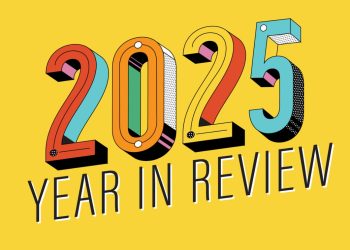Should the Consumer Financial Protection Bureau (CFPB) allow the GSE patch to expire? The government agency is strongly considering it, awaiting feedback, but the industry is concerned.
Working within the Qualified Mortgage (GM) rule—which allows mortgage lenders to presume a borrower’s ability to repay their loan based on several factors, such as credit history, income, debt-to-income (DTI) ratio, employment status, and more—the patch expands the conditions for safe harbor for loans eligible to purchase or guarantee by Freddie Mac or Fannie Mae. This protects against “legal liability” even if consumers’ debt-to-income ratios exceed the 43 percent threshold.
Earlier this year, the CFPB released results from its five-year assessment of the Ability to Repay/Qualified Mortgage Rule, which determined the GSE patch was not providing the expected results and may, therefore, be eliminated, as stated in the Advance Notice of Proposed Rulemaking regarding the Dodd-Frank Act ability to repay and qualified mortgage rules.
“The national mortgage market readjusting away from the patch can facilitate a more transparent, level playing field that ultimately benefits consumers through stronger consumer protection,” CFPB Director Kathy Kraninger said in a statement. “We want to hear all perspectives on how to move beyond the GSE patch, the impact on credit, the role of the private mortgage market, and possible modifications to the definition of qualified mortgages and the rules governing the documentation of debt and income. The bureau is committed to ensuring a smooth and orderly mortgage market throughout its consideration of these issues and any resulting transition away from the GSE patch.”
Many argue that the rule helps minority borrowers obtain fair lending. The National Association of Hispanic Real Estate Professionals (NAHREP), for example, urged the CFPB earlier this year to push out the patch’s expiration date, asserting that letting it lapse could have a detrimental impact on Hispanic buyers in particular.
“The expiration of the GSE QM patch would mean that FHA (Federal Housing Administration) would be the only remaining QM option for working-class Latinos, and QM is the only dependable source of lending in the market today,” NAHREP said in a statement. “This is problematic because, oftentimes, FHA loans can be more expensive for borrowers. Furthermore, limiting consumer choices can create market distortions that disadvantage private capital and interfere with the competitive nature of the market for these loans. At least for the full period of conservatorship, access to conventional loans should not be made unavailable to credit-worthy Latino borrowers based on the application of the 43 DTI ratio alone.”
In a statement released Friday, National Association of REALTORS® President John Smaby advocated for an extension of the patch, and “and a permanent solution that will prevent disruption as we work with CFBP to secure stability in the housing market.’’
‘’The QM patch was intended as a temporary measure to prevent turmoil in the mortgage and real estate market as the CFPB implemented the Ability to Repay rule,” Smaby stated. “Analysts estimate that as much as 30% of mortgages for home purchases fall into this market segment, and its disruption could result in higher costs and/or reduced access to mortgages for otherwise creditworthy homebuyers. This, in turn, could send ripples throughout the U.S. housing market.”
Advocates at the National Consumer Law Center and the Consumer Federation of America are also concerned. They released the following statement:
“The Dodd-Frank Act ability to repay rule remains a bulwark against the market excesses that brought us the recent financial crisis, a calamity from which many communities, especially low-income neighborhoods and communities of color, still have not recovered. Providing sustainable mortgage credit to these communities will require both adjustment of the CFPB’s ability to repay rules and an examination of the broader market forces constraining credit. In any adjustment to the standards for determining a borrower’s ability to repay, a revised rule must continue to hold at the forefront the prevention of harm to consumers in the form of the extension of improvident, risky, unaffordable loans. Because the racial wealth gap widened as a result of the foreclosure crisis, any new rule also must ensure that it helps and does not harm homeownership in communities of color through adoption of limits or tests that further, rather than reduce, historic discriminatory practices.”
They are also proposing that the following actions could expand access to credit without advocating for risky lending:
- Implementing affordability measures based on cash flow (lenders can use this when creating qualified mortgages)
- Raising the debt-to-income threshold from 43 percent to include additional compensating factors and underwriting measures
- Removing loans that carry more risk, such as adjustable-rate loans and high-cost mortgages, from the qualified mortgage liability safe harbor for lenders
- Reducing the burden from regulation by simplifying the Bureau’s existing rules for defining debt and income
- Increasing flexibility rather than providing safe harbor for all borrowers to better meet the original law
According to a report released by the Center for Responsible Lending, “A Smarter Qualified Mortgage Can Benefit Borrowers, Taxpayers, and the Economy,” allowing the patch to expire could have dire consequences for many mortgages because 3.3 million loans guaranteed by the GSEs over the past five years would not meet QM standards, as they failed to meet the DTI limit.
The report offers these two alternative solutions:
- Allow lenders to use compensating factors for near-prime loans
- Adapt a validated underwriting model approach that uses predictive analytics for compensating factors
“CFPB should amend its rule to accommodate the significant number of sustainable loans over 43 percent DTI so that these borrowers will not be forced out of the mortgage market altogether or into more expensive and riskier products,” said Eric Stein and Mike Calhoun, authors of the report. “While DTI is an important factor to consider in underwriting loans, CFPB should choose an approach for near-prime loans that permits lenders to use compensating factors rather than relying solely on DTI.”
The patch is scheduled to expire no later than Jan. 10, 2021.
Liz Dominguez is RISMedia’s associate content editor. Email her your real estate news ideas at ldominguez@rismedia.com.










